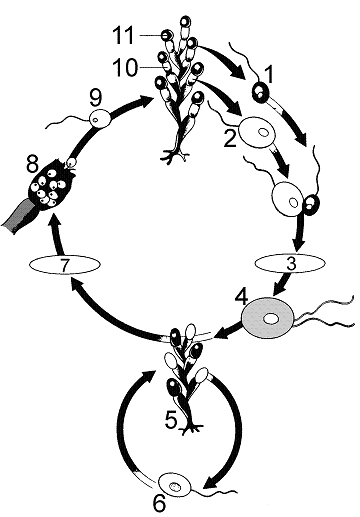The process occurring at point 3 in Figure 29-2 is:

a. asexual reproduction.
b. fertilization.
c. meiosis.
d. mitosis.
e. zygote germination.
B
You might also like to view...
A scientist is studying some developing eggs from an ocean sample. The early embryos have divided only a few times, and all cells look identical. When the scientist carefully removes half the cells from an embryo, both clumps of cells are able to complete development, forming twins. The eggs can be identified as:
A. deuterostomes B. protostomes C. crustaceans D. cnidarians E. echinoderms Clarify Question · What is the key concept addressed by the question? · What type of thinking is required? Gather Content · What do you already know about determinate and indeterminate development? Choose Answer · Given what you now know, what information and/or problem solving approach is most likely to produce the correct answer? Reflect on Process · Did your problem-solving process lead you to the correct answer? If not, where did the process break down or lead you astray? How can you revise your approach to produce a more desirable result?
A protein synthesis inhibitor would block learning in a human, but would have no effect in a simple invertebrate like Aplysia.
Answer the following statement true (T) or false (F)
Total species diversity, or species richness, across all communities within a geographic area is referred to as ________ diversity
Fill in the blank(s) with correct word
Sporotrichosis is associated with soil high in pigeon droppings that is introduced into subcutaneous tissue.
Answer the following statement true (T) or false (F)